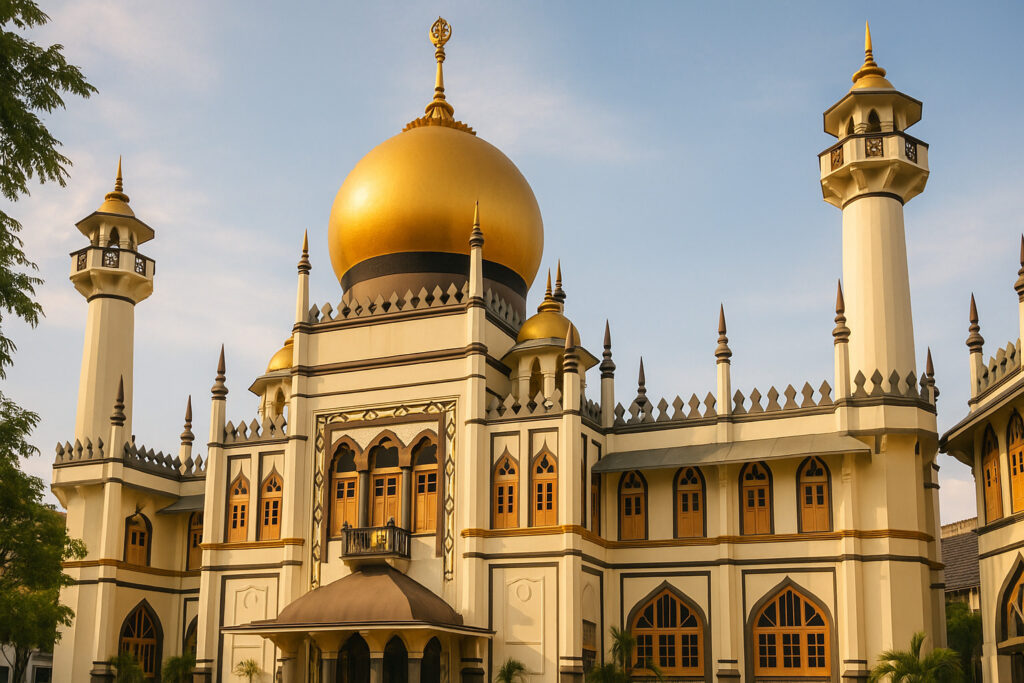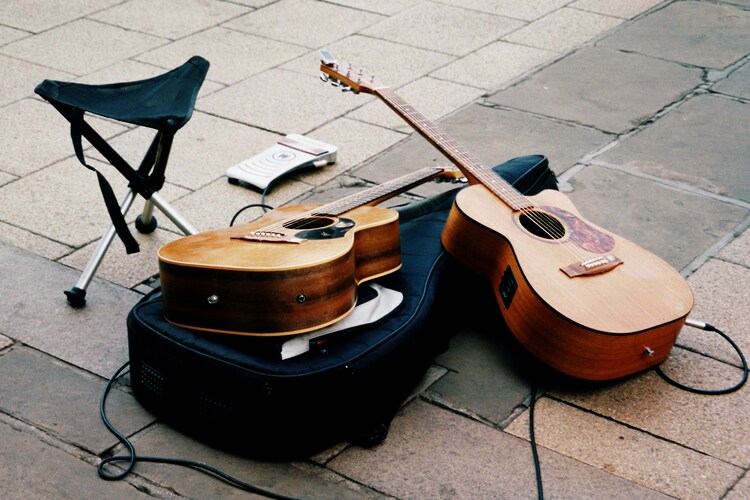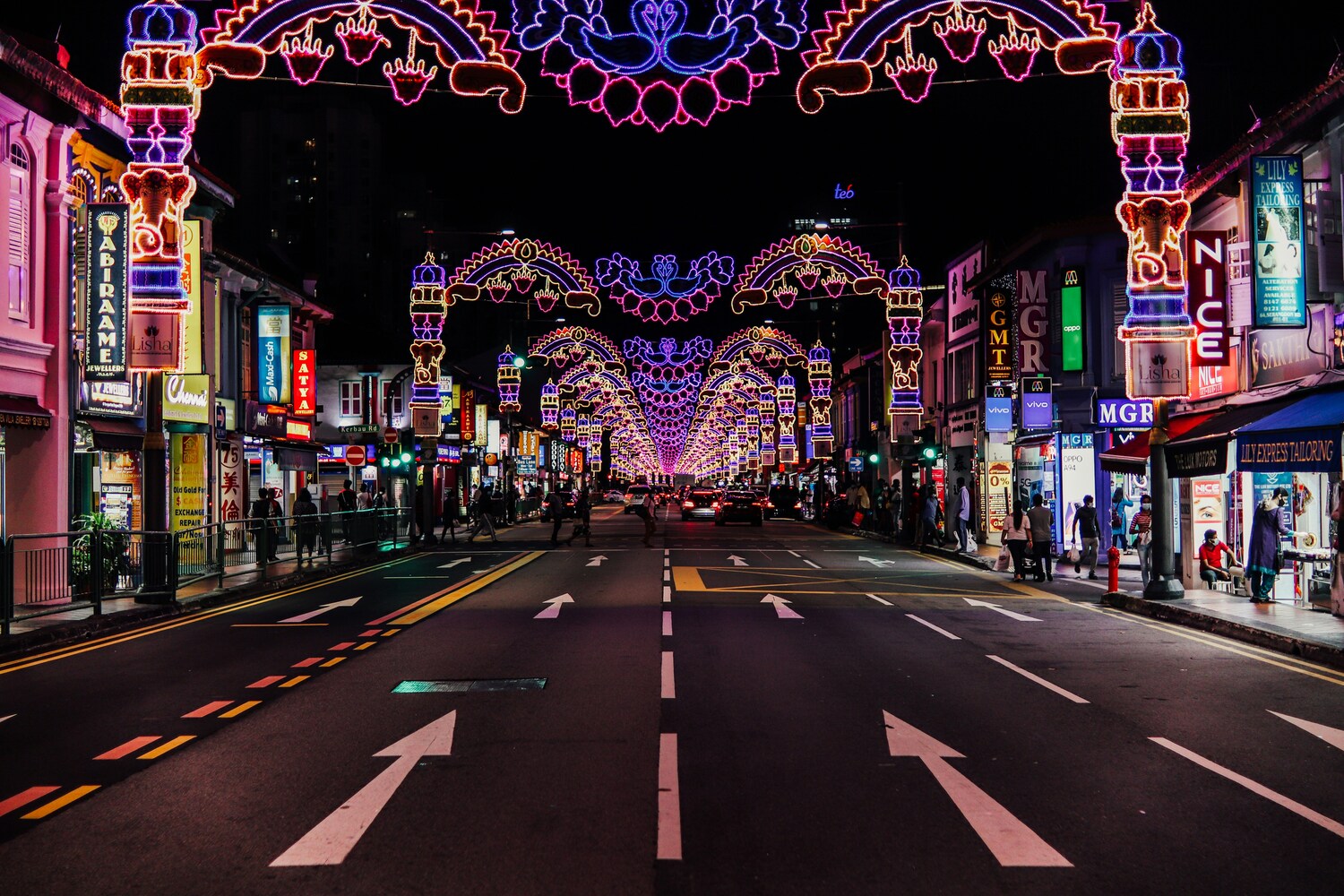Step into Kampong Glam heritage, the Malay-Muslim cultural heart of Singapore, and you’ll immediately sense its unique energy. The prayer call from Masjid Sultan drifts across Arab Street, Muscat Street, and Bussorah Street, while the fragrance of spices and oud perfumes fills the air. Shophouses with second floor balconies showcase shimmering textiles, long time businesses sell perfumes and carpets, and trendy cafés on Haji Lane spill into alleys decorated with vibrant murals.
But Kampong Gelam is far more than a picturesque neighbourhood. It is a district of deep cultural significance, where Malay royalty, Arab traders, and the wider Muslim community shaped the city’s history. This guide explores its origins, iconic landmarks like the Sultan Mosque and Istana Kampong Gelam, its food traditions, and why it remains an important focal point for diverse communities today.
Introduction to Heritage Sites: Understanding Singapore’s Historic Precincts
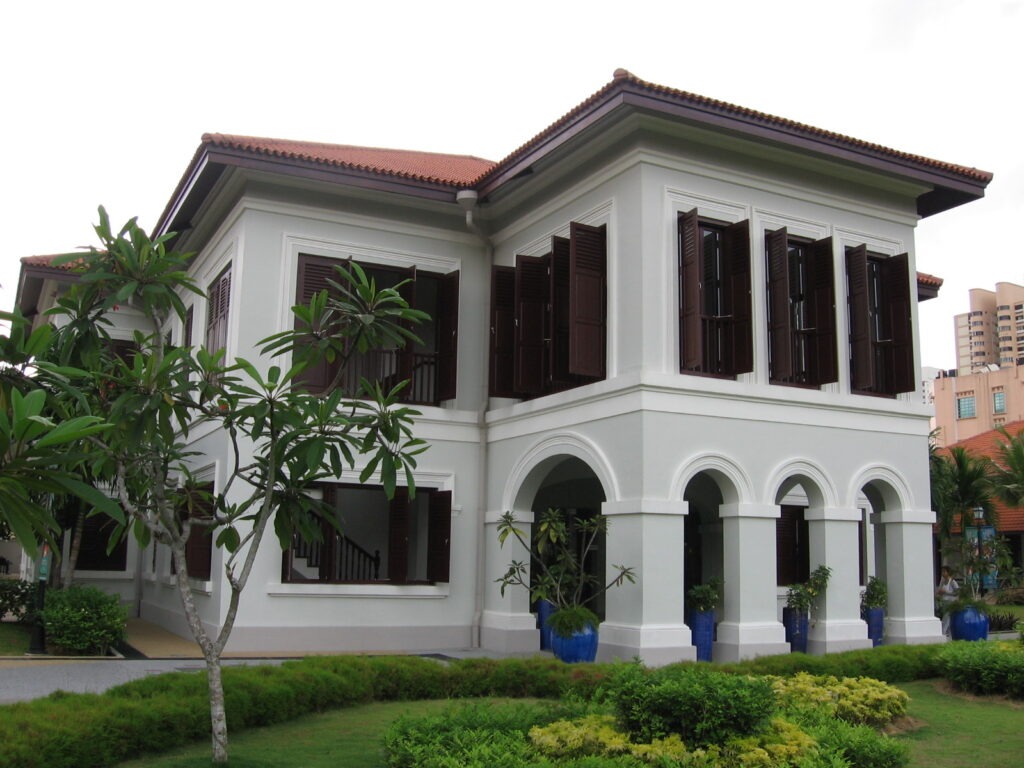
Among Singapore’s historic precincts, Kampong Glam stands out for its unique blend of faith, trade, and royalty. Its story began in 1819 when the British East India Company signed a treaty with Sultan Hussein and Temenggong Abdul Rahman, establishing Singapore as a trading post. In 1824, further agreements granted Sultan Hussein Shah land at Sultan Gate, where he built his palace—later known as Istana Kampong Gelam.
This district was reserved for Malays, Arabs, and other Muslims, quickly developing into a pilgrim village (or Kampong Kaji) where regional Muslims gathered before embarking on the hajj. By the mid-19th century, it had become a hub of commerce, culture, and Islamic learning. Newspapers like the Singapore Free Press, Mercantile Advertiser, and the Straits Times documented its thriving businesses, which included textiles, perfumes, food, and artisanal trades.
Today, the National Heritage Board preserves this legacy through the Kampong Glam Heritage Trail, guiding visitors past conserved streets like Arab Street, North Bridge Road, and Baghdad Street. Here, striking features of striking architecture, schools, and mosques continue to reflect the district’s layered history.
Masjid Sultan (Sultan Mosque): Striking Architecture and a National Monument
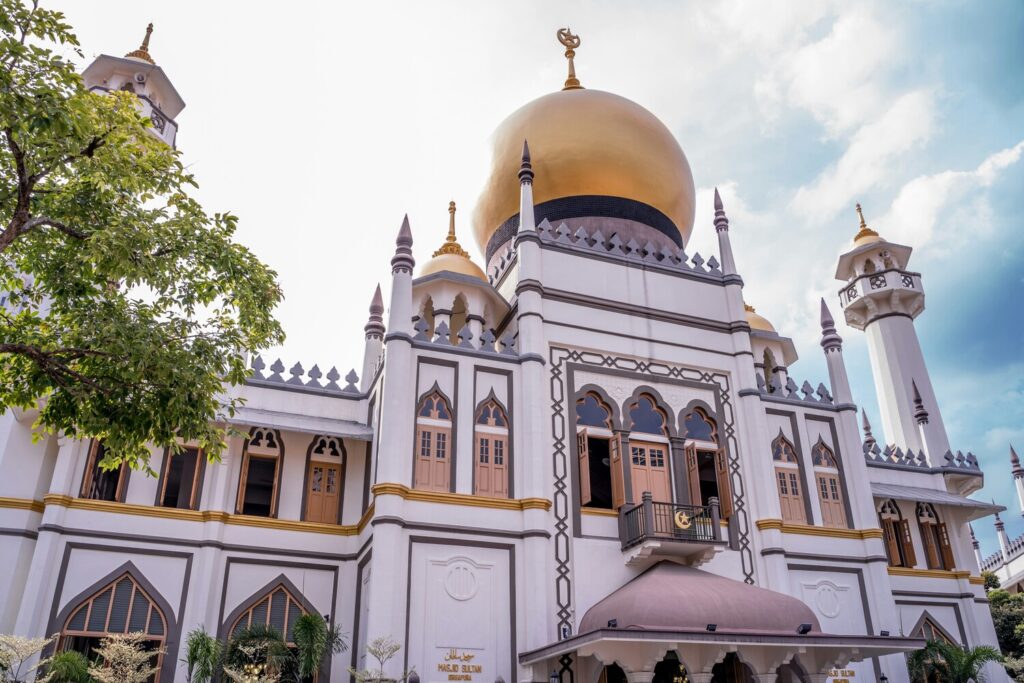
The crown jewel of Kampong Gelam is Masjid Sultan, or the Sultan Mosque, first built in 1824 with funding from the British East India Company for Sultan Hussein Shah. This mosque’s construction marked the start of its role as a spiritual focal point for the Muslim community. The mosque’s construction took place in several phases, beginning with the original structure in 1824, followed by a major rebuilding in 1932 that introduced the current Indo Saracenic design. Over the years, the mosque has seen significant renovations and extensions, reflecting its evolving architectural style and enduring cultural significance.
The current building, completed in 1932, was designed in Indo Saracenic style, with golden domes, tall minarets, and decorative cast iron railings. One of its most remarkable details is the base of the domes, decorated with rows of glass bottle ends donated by poorer Muslims—an enduring symbol of inclusivity.
The mosque underwent extensive conservation under the Mosque Upgrading Programme led by the Islamic Religious Council (MUIS), with support from the National Heritage Board. Renovations introduced new floor tiles and improved facilities while preserving authenticity. Today, Muslims gather here daily, with thousands joining prayers during Ramadan and Hari Raya.
Over time, the mosque has gained global recognition. A historic visit by King Faisal of Saudi Arabia in 1974, along with links to the World Muslim League, further elevated its international standing. In recognition of its striking architecture and heritage, it was designated a national monument, making it one of Singapore’s most important focal points.
Istana Kampong Gelam and the Malay Heritage Centre: Royal Palace to Cultural Focal Point
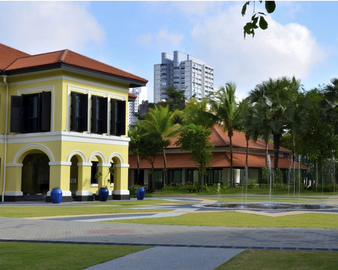
Next to the mosque lies Istana Kampong Gelam, built in the 1840s as the royal palace of the Malay sultans. Combining Malay motifs with European Palladian influences, the building reflected the cosmopolitan spirit of the district. It housed generations of Malay royalty, including Sultan Hussein’s grandson, Tunku Alam, until the monarchy’s political role diminished.
The palace eventually fell into disrepair, with parts even demolished, but in 1999 it was restored. Reopened under the National Heritage Board as the Malay Heritage Centre, it became a cultural centre showcasing exhibitions on Malay history, literature, textiles, and music. The contributions of Arab families such as the Alsagoffs, Aljunieds, and Alkaffs—whose philanthropy helped shape Singapore—are also celebrated.
Today, the Malay Heritage Centre remains a focal point for heritage festivals, workshops, and performances, ensuring the palace continues to serve the community.
Kampong Glam’s Trading Past: Arab Street, Java Street, and Everyday Life
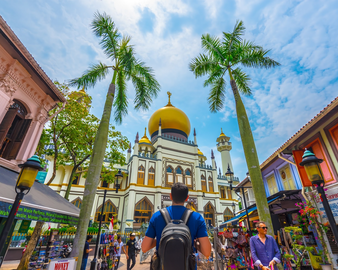
The Arab community played a pivotal role in shaping the district.
Arab Street became famous for its shimmering fabrics, carpets, and perfumes, with long time businesses still serving loyal customers.
Java Street once hosted the Javanese Jawa Koi community, with lodgings like Pondok Java and Yellow Mansion housing pilgrims.
Kandahar Street, Baghdad Street, and North Bridge Road were lined with second floor shophouses and eateries, cementing their role in daily life.
Bussorah Street served as the grand boulevard to the mosque, while kampong tembaga was home to coppersmiths and artisans.
Together, these streets reveal how cultural significance in Kampong Glam lay not only in grand monuments but also in daily commerce, crafts, and community traditions.
Living Malay Heritage: Food, Education, and the Muslim Community
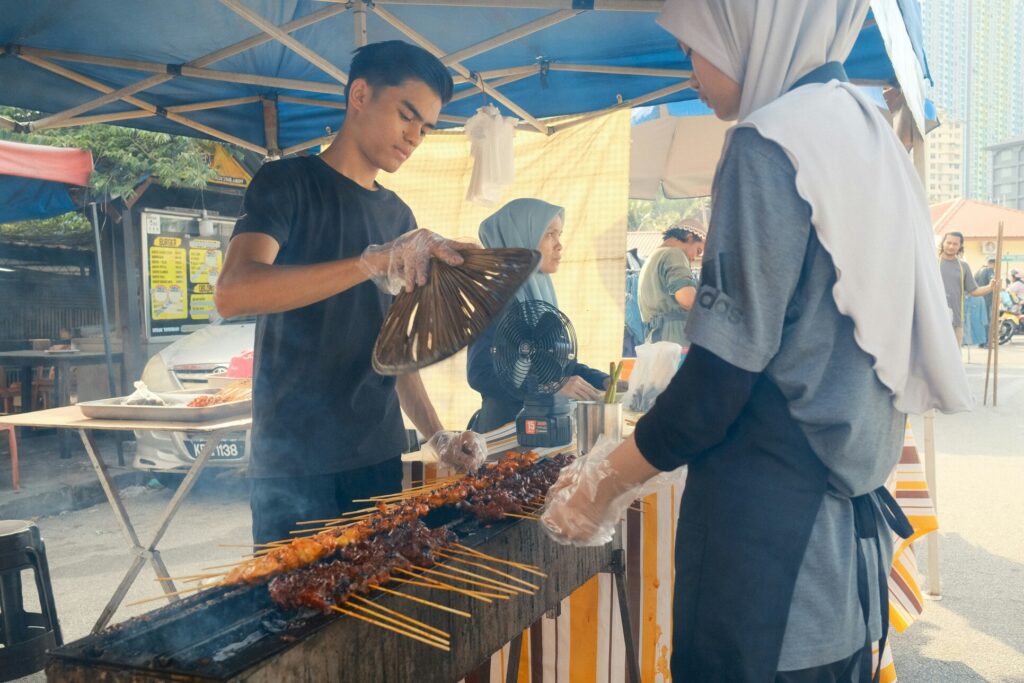
The Malay community kept its traditions alive through food, faith, and education. Around Bussorah Street and Arab Street, family-run eateries serve classics like nasi padang, nasi lemak, satay, and trays of colourful kueh—recipes passed down for two thirds of a century.
The madrasah Alsagoff Al Arabiah, founded in 1912, continues to provide Islamic education, reinforcing the district’s role as a religious and cultural centre. Festivals like Hari Raya illuminate the streets with lights, bazaars, and prayers, while older forms of performance such as Wayang Kulit and Bangsawan recall the artistic vibrancy of the past.
Community Engagement: The Heartbeat of Kampong Glam
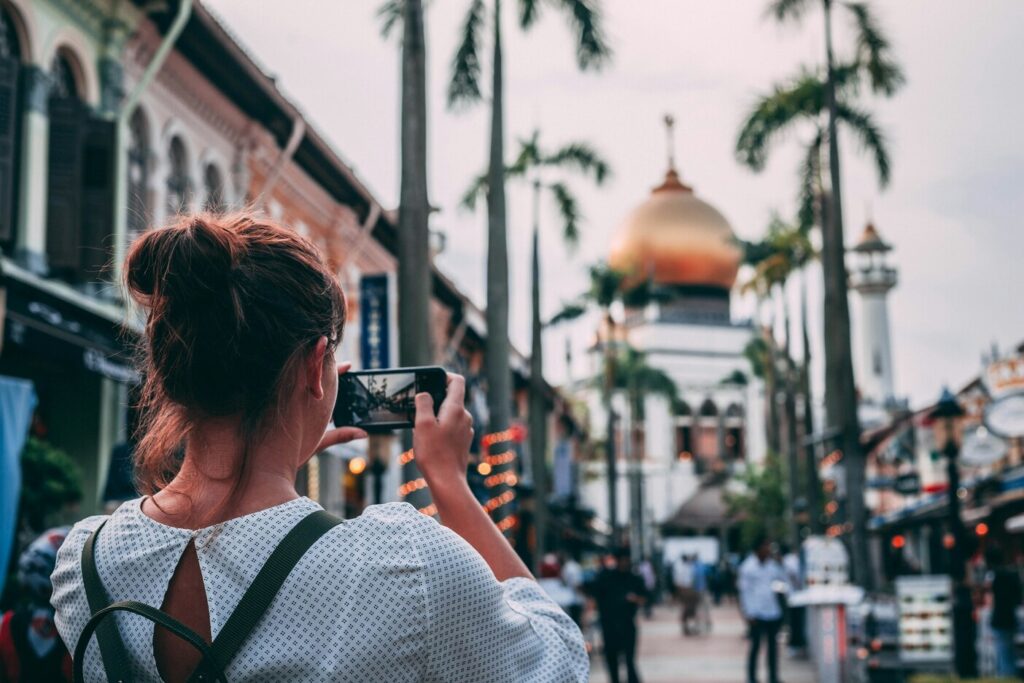
At the core of Kampong Glam’s enduring appeal is its vibrant community spirit, where heritage is not just preserved but actively lived and celebrated. The Malay Heritage Centre, located within the historic grounds of Istana Kampong Gelam, stands as a beacon for Malay identity and culture. Through dynamic exhibitions, educational workshops, and cultural festivals, the centre brings to life the stories, traditions, and artistry of the Malay community. Signature events like the “Beats on Baghdad Street” series transform the precinct into an open-air stage, where Malay music, dance, and crafts are shared with locals and visitors alike, reinforcing the area’s role as a cultural focal point.
Masjid Sultan, with its striking architecture and golden domes, remains the spiritual heart of Kampong Glam. Originally commissioned by Sultan Hussein Shah with support from the British East India Company, the mosque’s construction and subsequent restorations have always been community-driven. The most recent major restoration, part of the Mosque Upgrading Programme led by the Islamic Religious Council, saw the mosque undergo extensive upgrades—new floor tiles, restored doors and windows, and enhanced facilities—ensuring it remains welcoming and accessible for generations to come. The mosque’s prominent location on Muscat Street makes it a gathering place for the Muslim community, especially during Ramadan, when the area comes alive with bustling night markets, the melodic prayer call, and communal iftar meals.
Kampong Glam’s streets—North Bridge Road, Arab Street, and Baghdad Street—are lined with long-time businesses, from family-run nasi padang eateries to textile merchants, each contributing to the precinct’s rich tapestry of culture. The area’s diverse communities, including Malay, Arab, and Javanese residents, have shaped its unique character, making it a living example of Singapore’s multicultural heritage. Madrasahs such as Madrasah Alsagoff Al-Arabiah continue to provide religious education, nurturing the next generation and reinforcing the district’s role as a centre for learning and faith.
Recognised as a national monument in 1975, Sultan Mosque stands as both a place of worship and a symbol of unity. Its history reflects international ties—from support by the World Muslim League to a visit by King Faisal of Saudi Arabia—while commemorative plaques unveiled by Singapore’s Prime Ministers highlight the nation’s ongoing commitment to preserving this iconic landmark.
Throughout the year, Kampong Glam pulses with community-led events, from street performances to heritage trails, ensuring that its legacy is not only remembered but continually renewed. This spirit of engagement—rooted in solidarity, shared history, and a passion for culture—makes Kampong Glam a must-visit destination for anyone seeking to experience the living heritage of Singapore. Here, the past and present converge, and the community’s heartbeat ensures that the precinct’s stories will endure for generations to come.
Kampong Gelam Today: Striking Features of Heritage and Modernity
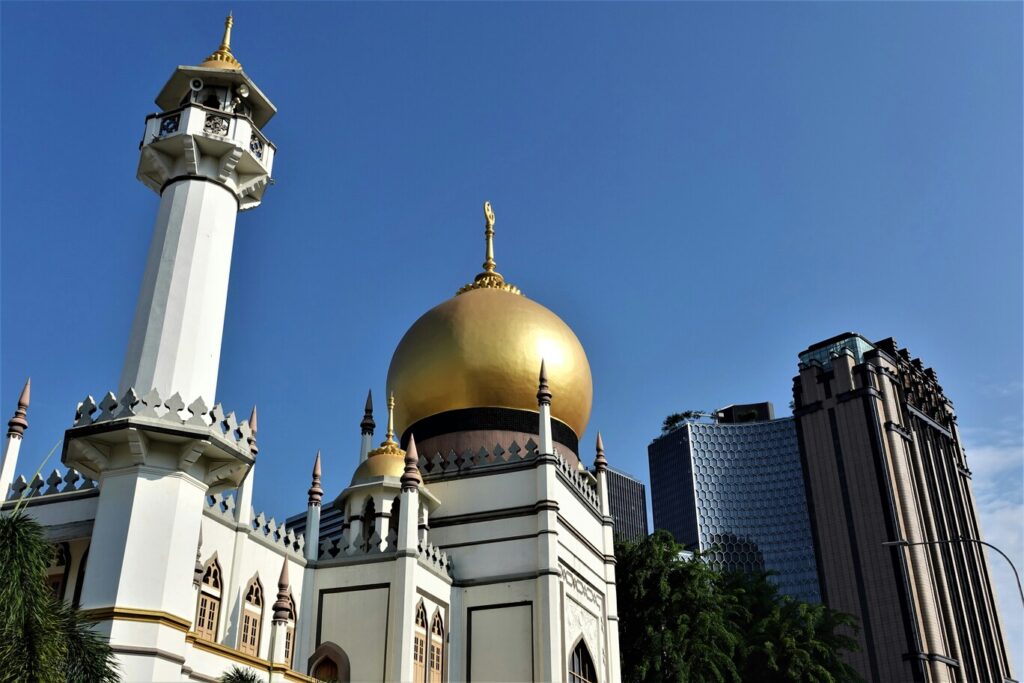
Conservation by the National Heritage Board has safeguarded second floor shophouses, cast iron railings, and colourful floor tiles, while retaining landmarks like Masjid Sultan and Istana Kampong Gelam.
At the same time, modern culture thrives: the Aliwal Urban Art Festival brings street art and music, while long time businesses coexist with indie boutiques on Haji Lane. This balance allows Kampong Gelam to remain both a preserved heritage district and a dynamic cultural hub.
Why Kampong Glam Heritage Matters
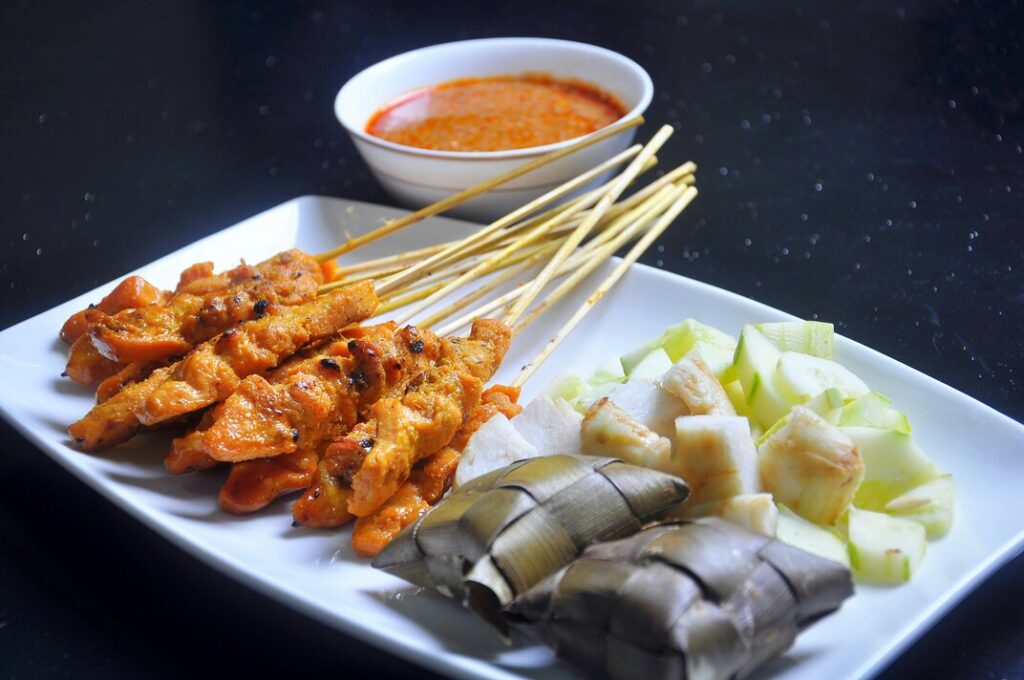
A visit here is more than sightseeing—it is about experiencing heritage, supporting the community, and engaging with living traditions.
Admire the mosque’s striking architecture and learn about its mosque’s construction details like the glass bottle ends.
Explore the Malay Heritage Centre inside Istana Kampong Gelam.
Wander Arab Street, Baghdad Street, and North Bridge Road for textiles, perfumes, and crafts.
Taste nasi padang and kueh, preserving culinary culture.
Join festivals and workshops that highlight the district’s role as an enduring cultural focal point.
From the crescent moon glinting on the mosque dome to the aroma of food stalls, Kampong Gelam is where history and modern culture meet. By walking its streets, learning its stories, and supporting its people, every visitor helps ensure this heritage endures.

